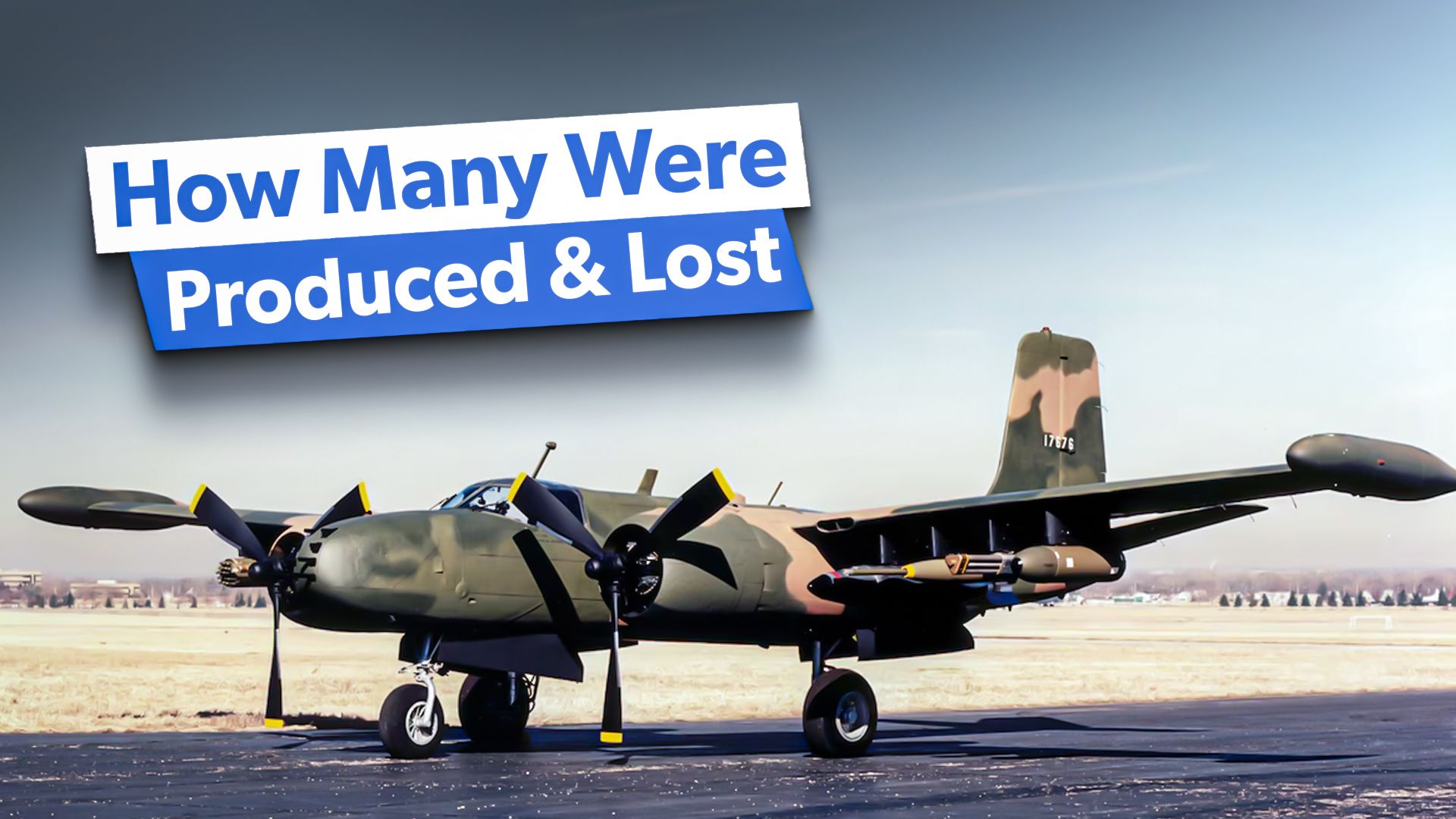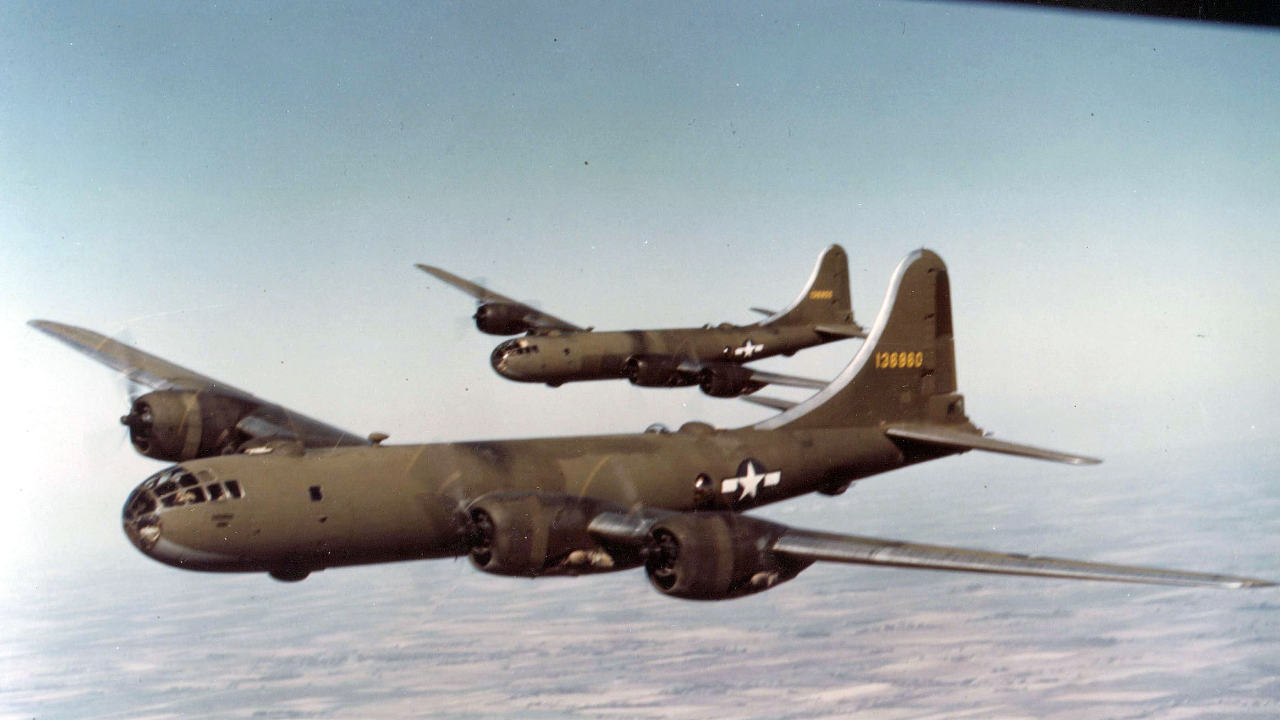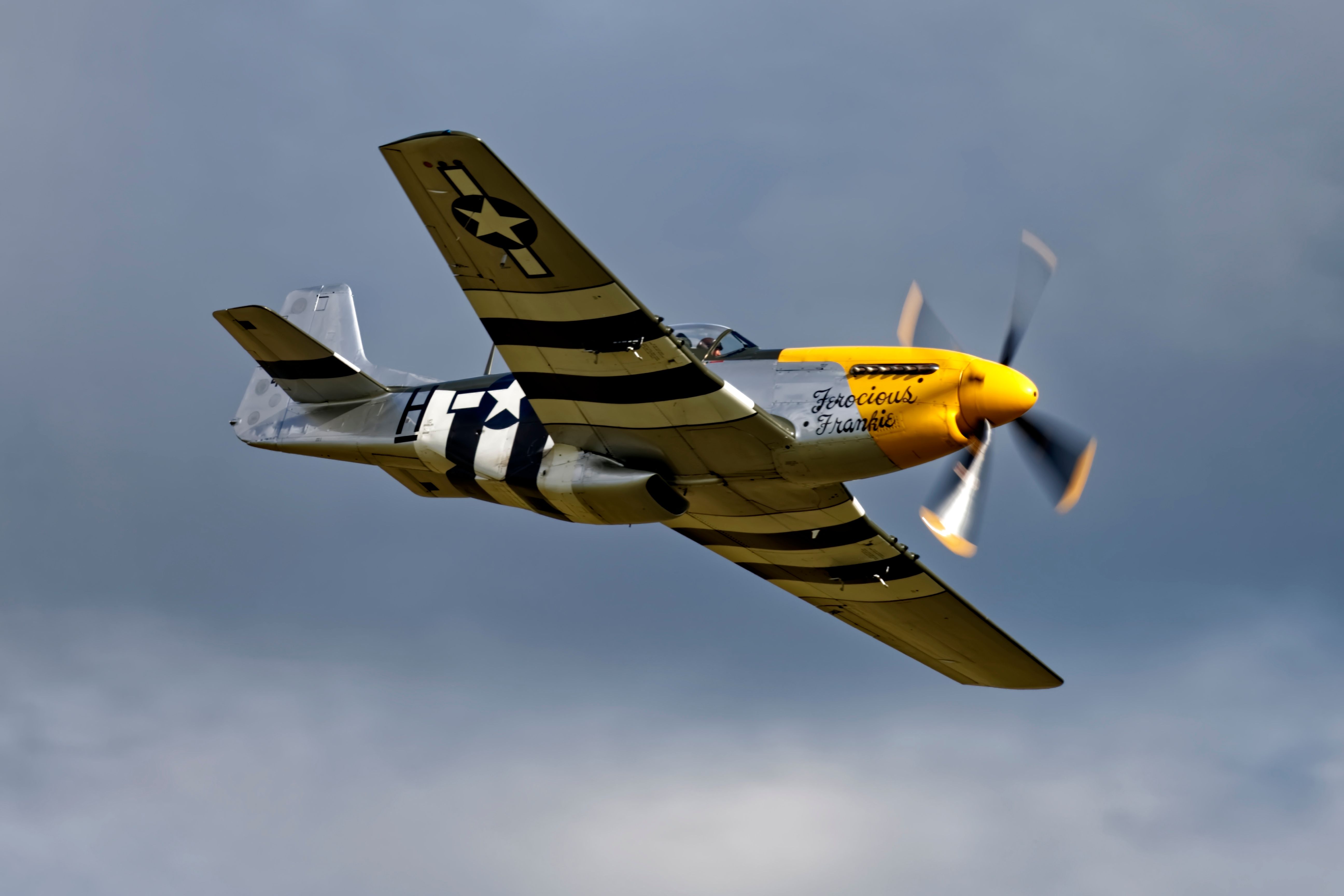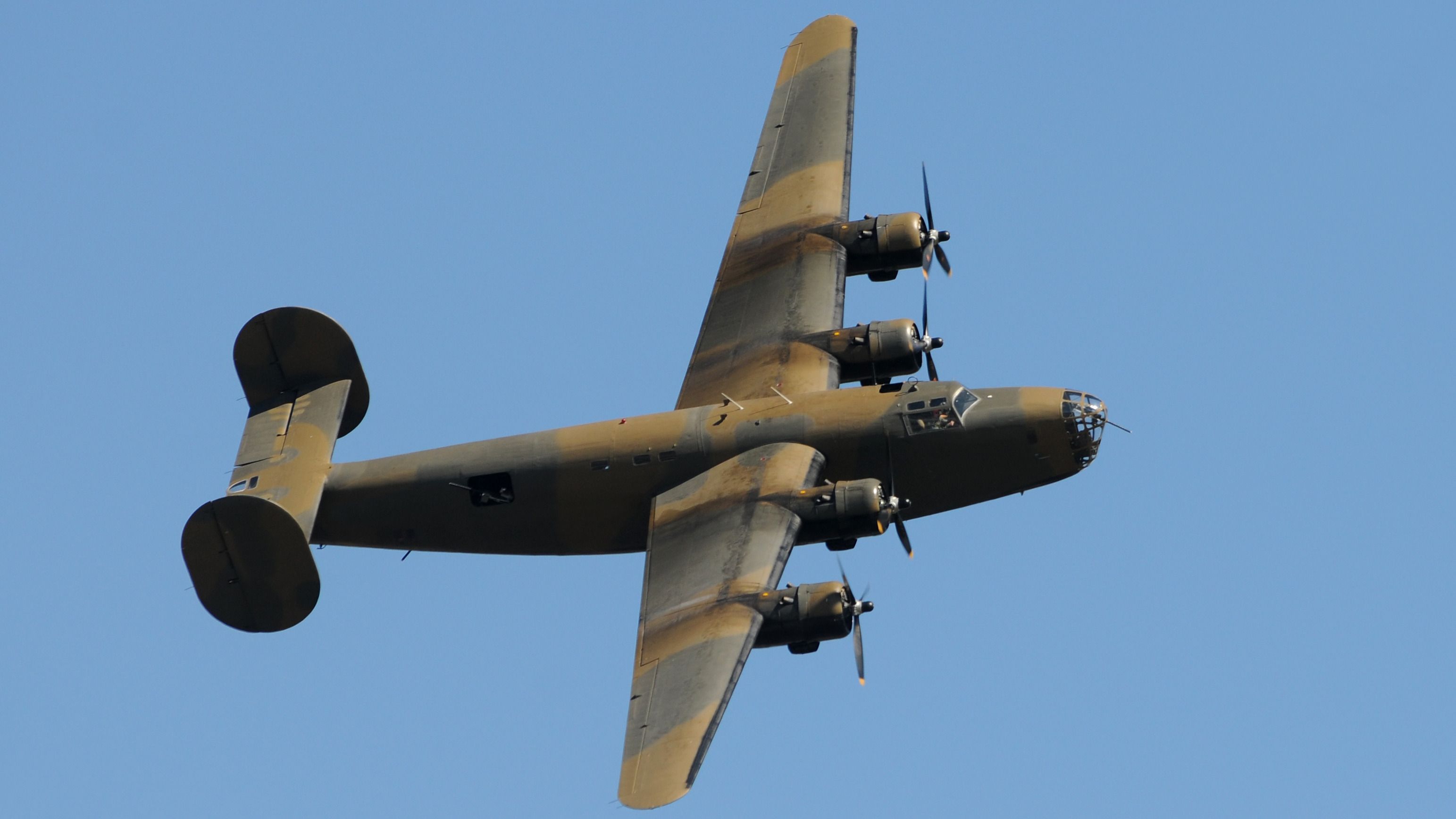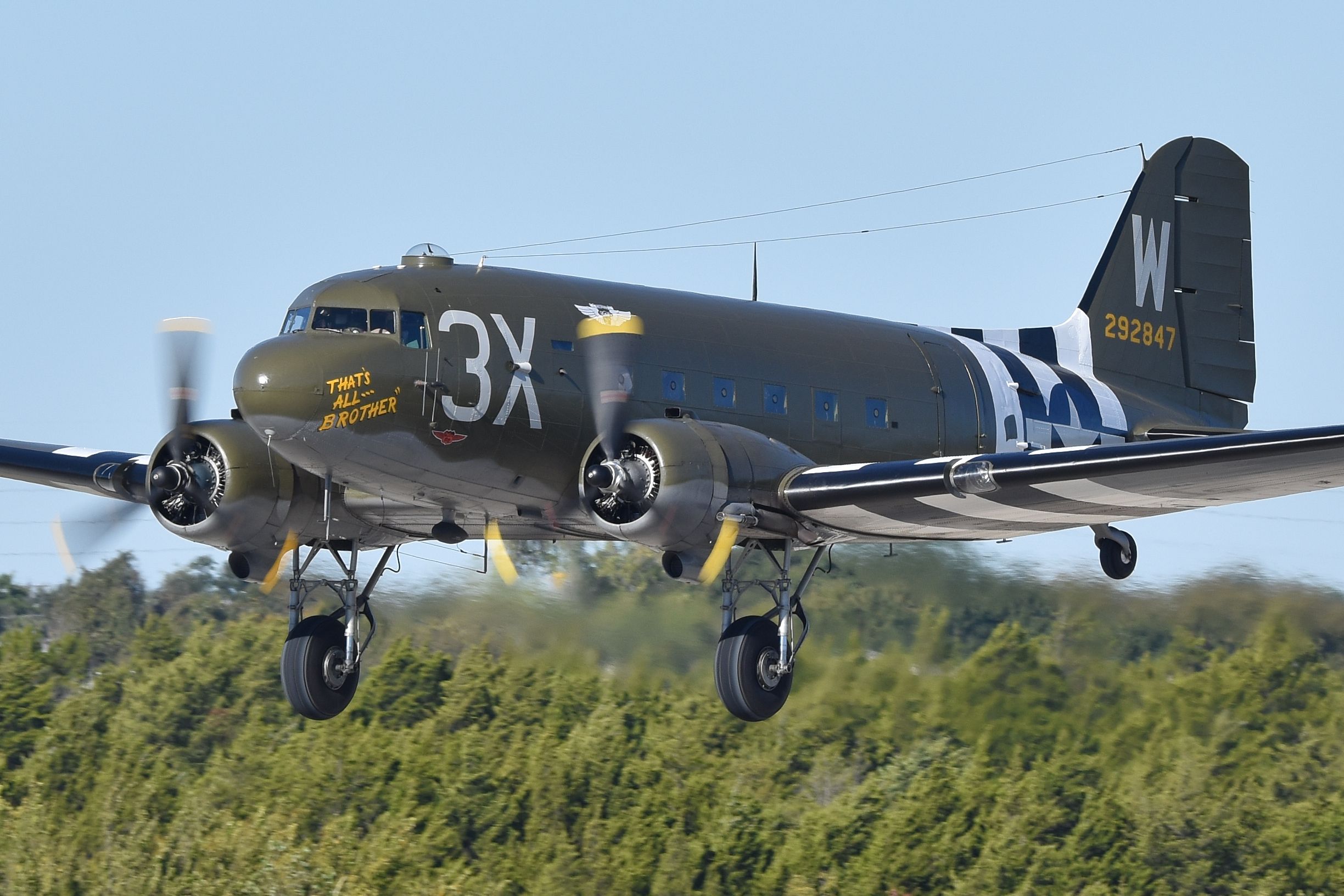Summary
- The US produced over 300,000 aircraft in WWII, enabling the overmatch of Axis powers.
- It shifted to a total war economy, banning civilian car production to focus on the war effort.
- The country donated over 14,000 planes to the Soviets and more to other Allies and still had the largest air force at the end of the war.
It is well known that the US was an industrial juggernaut in World War Two. The amount of aircraft and other military equipment the US produced is astounding. Not only did the US produce more than any other country, but it also supplied its Allies and produced better and more expensive aircraft (such as the B-29 Superfortress and P-51 Mustang). The US enabled the Allies to over-match the Axis powers in World War Two. That said, the Soviet Ilyushin Il-2 was the most produced military aircraft of the war (followed by the German Messerschmitt Bf 106 and the British Supermarine Spitfire).
World War Two US aircraft production
Before the war (before 1939), the US had a small army, and its army air force was less than formidable. At the start of the war, the US Army Air Corps (US AAF) only had a few hundred airplanes, but by the end of the war, it was the largest air force ever created. According to the Air Force Historical Support Division, it had almost 80,000 airplanes (plus the Navy aviation arm). The US Air Force was split off from the Army after the war in 1947.
In 1939, the US produced less than 3,000 military aircraft. After America entered the war, it switched to a total war economy. The production and sale of civilian cars were banned—all available industry was dedicated to the war effort. In all, the United States produced around 300,000 aircraft of all types (including trainers). Of these, over 65,160 were lost in training, transportation, combat, and other causes.
But not only did the US industry supply its own forces, it also supplied its allies. The British received many aircraft from American production, while the US donated 14,000 aircraft of varying descriptions to the Soviets (and the British supplied the Soviets with thousands more). The US also supplied the Soviets with many of the raw materials needed to create aircraft, along with much of its aviation fuel and thousands of engines.
When peace once again returned, the US had a surplus of around 150,000 aircraft. Many of the aircraft already deployed overseas never returned. The US just buried, bulldozed, or sunk many of them at sea (although many did return for storage and scrapping).
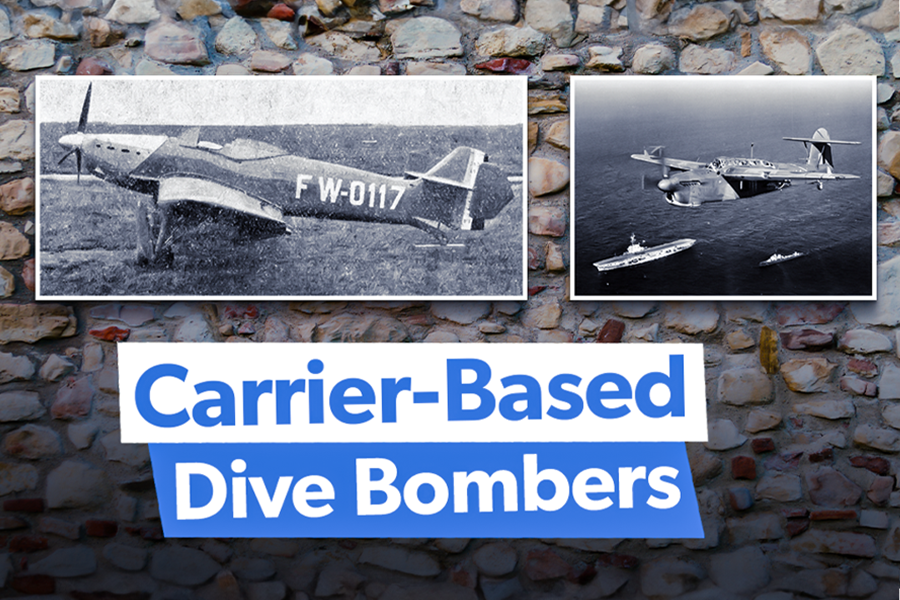
Related
Exploring The Top 5 WWII Carrier-Based Dive Bombers
The US, UK, Japan, and France all operated aircraft carriers and aircraft carrier-based dive bombers in WW2.
Fighters
The greater number of aircraft produced were fighters. These were much easier to produce than their much larger cargo and bomber counterparts. The P-47 “Thunderbolt” was considered one of America’s most outstanding fighters of the war and was also used by American allies (including the British, French, and Russians). They were particularly regarded for their ability to survive heavy battle damage.
Another venerable American fighter was the P-51 “Mustang.” The Mustang was a long-range fighter used to escort heavy bombers and was the top US AAF air-to-air fighter of the war.
Photo: Andrew Harker | Shutterstock
|
Aircraft: |
Manufacturer: |
Crew: |
Quantity: |
|---|---|---|---|
|
P-38 |
Lockheed |
1 |
9,536 |
|
P-39 |
Bell |
1 |
9,588 |
|
P-40 |
Curtiss |
1 |
13,738 |
|
P-47 |
Republic |
1 |
15,683 |
|
P-51 |
North American |
1 |
14,686 |
|
P-61 |
Northrup |
3 |
702 |
In 1919, the Navy had nearly abolished its aviation arm. In the 1920s and 1930s, the Navy experimented with massive airships and airship aircraft carriers (although most of these ended in disaster). During the Interwar period, the Navy developed (sea-based) aircraft carriers, and by the time of its entry into World War Two, the Navy had more airpower than the Japanese Navy. Like the Army Air Force, the Navy aviation arm grew tremendously, defeating its Japanese enemy.
US Navy fighters halted the Imperial Japanese Navy’s drive across the Pacific. The Douglas SBD Dauntless dive bomber was perhaps the most iconic carrier-based aircraft of the war (at least early Pacific War) and was responsible for sinking six Japanese aircraft carriers (including four at the Battle of Midway).

Related
Top 5 Historic Missions Of The B-52 Stratofortress
The B-52 is America’s most accomplished bomber of the post-WWII era. Let’s take a look at some of this illustrious aircraft’s most defining missions.
Bombers
While the Soviets produced a lot of aircraft, they were mostly small fighters. Bombers were much more expensive and difficult to produce. Bomber production was dominated by the British and Americans (the Germans also built a reasonable number of bombers). The bomber workhorses of the AAF were the B-17 “Flying Fortress,” B-24 “Liberator,” B-26 “Marauder,” and B-29 (the B-25 “Mitchell” was another notable medium bomber).
Photo: Ivan Cholakov | Shutterstock
The B-29 Superfortress was the most expensive military project of the war (for any nation). It entered service towards the end of the war and is famous (or infamous) for firebombing Japan and dropping nuclear bombs on Hiroshima and Nagasaki.
|
Aircraft: |
Manufacturer: |
Crew: |
Quantity: |
|---|---|---|---|
|
B-17 |
Boeing |
10 |
12,692 |
|
B-24 |
Consolidated |
10 |
18,190 |
|
B-25 |
North American |
6 |
9,186 |
|
B-26 |
Martin |
7 |
5,157 |
|
B-29 |
Boeing |
11 |
5,000 |
Cargo/Transport
The British and Americans had to fight wars a world away in the Pacific Theater and still overseas in Europe for the British. They had to prepare for amphibious landings and conduct complicated military operations. For this, the United States produced vast amounts of cargo aircraft (as did the British – including many cheap gliders).
|
Aircraft: |
Manufacturer: |
Crew: |
Quantity: |
|---|---|---|---|
|
C-46 |
Curtiss-Wright |
4 |
3,180 |
|
C-47 |
Douglas |
3 |
10,368 |
|
C-54 |
Douglas |
6 |
1,162 |
One of the most iconic American cargo aircraft was the C-47 “Skytrain.” It evolved from the DC-3 airliners and could carry 25 paratroopers or up to 10,000 lbs of cargo. The US used the C-47 in every airborne force’s operation during the war, and Eisenhower hailed it as one of the principal instruments of Allied victory.

